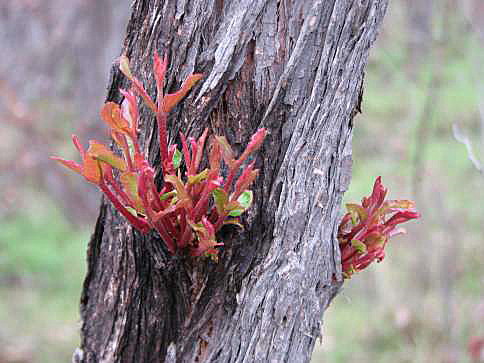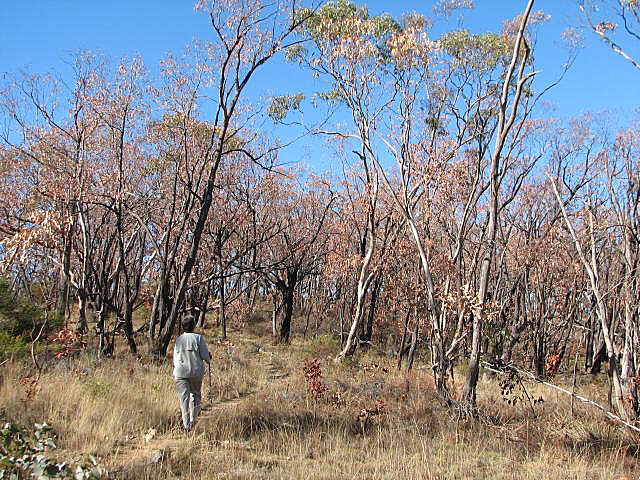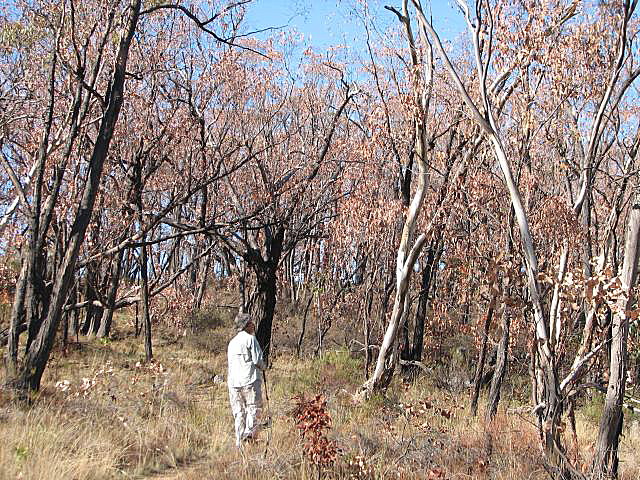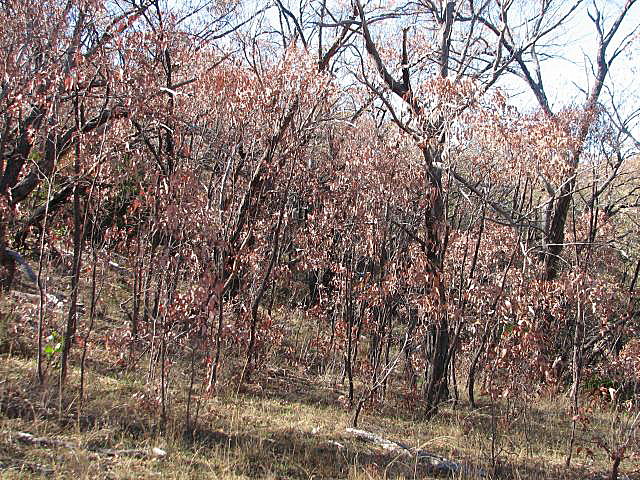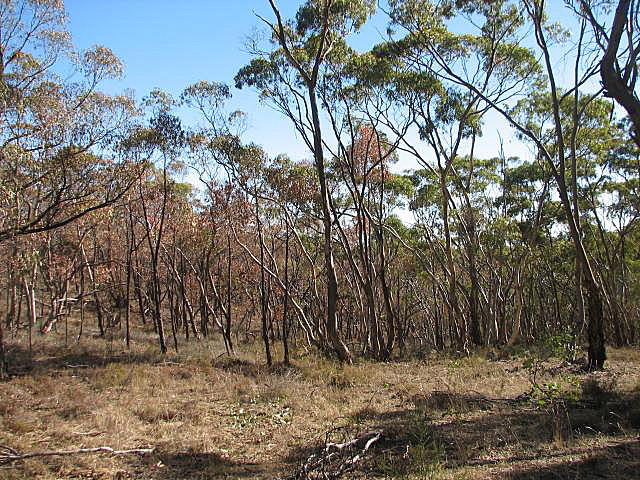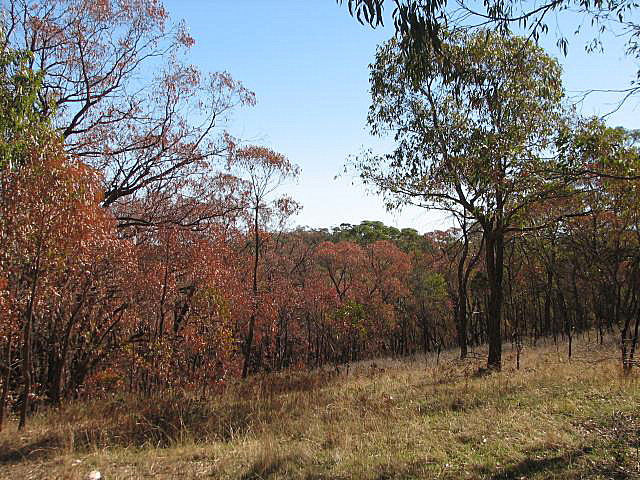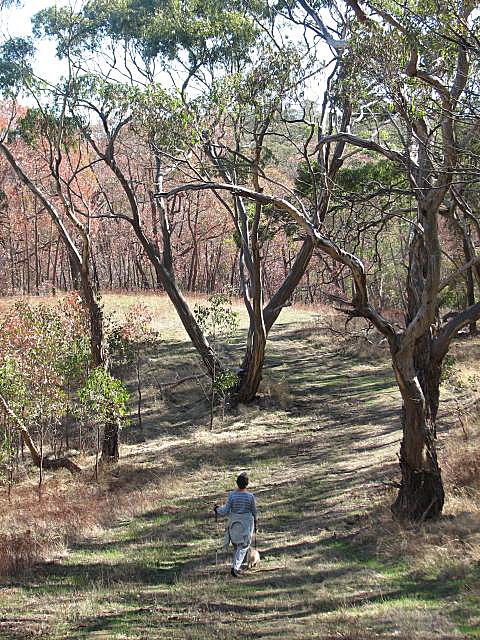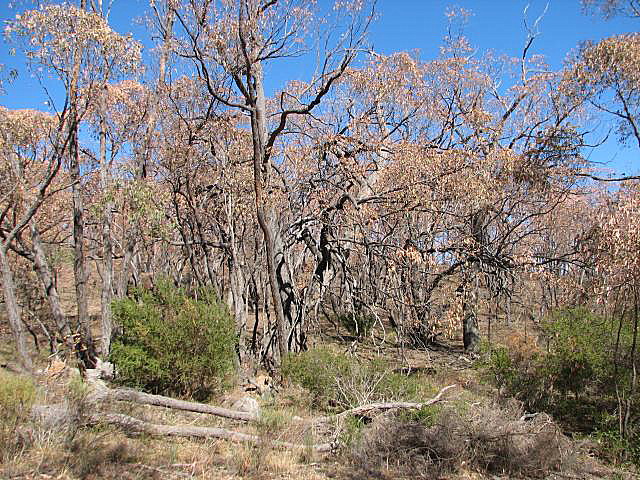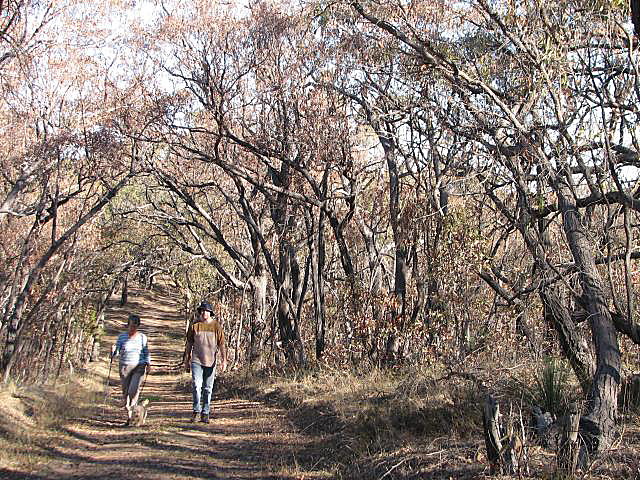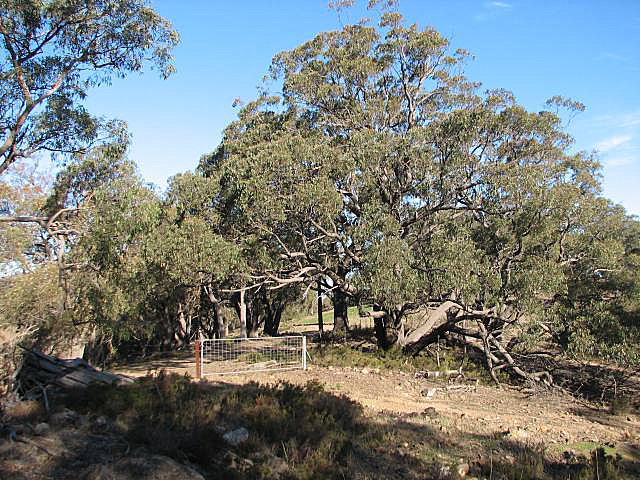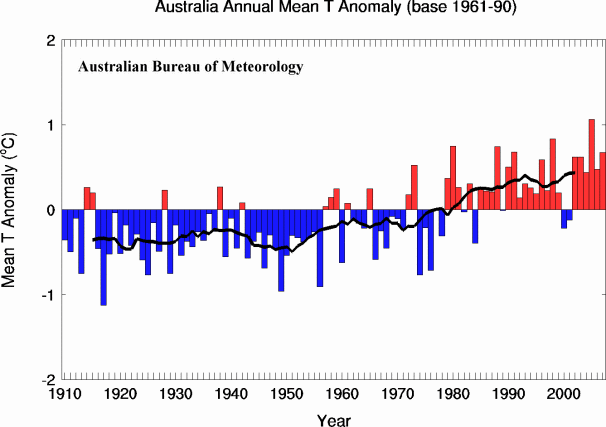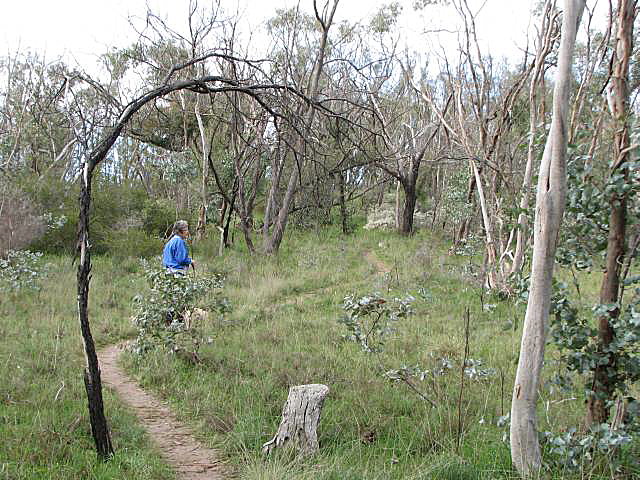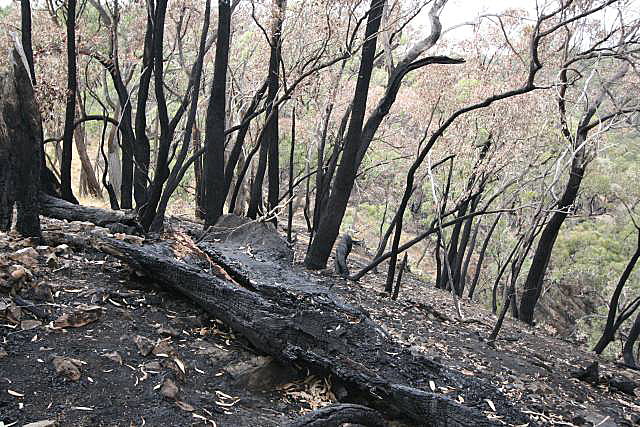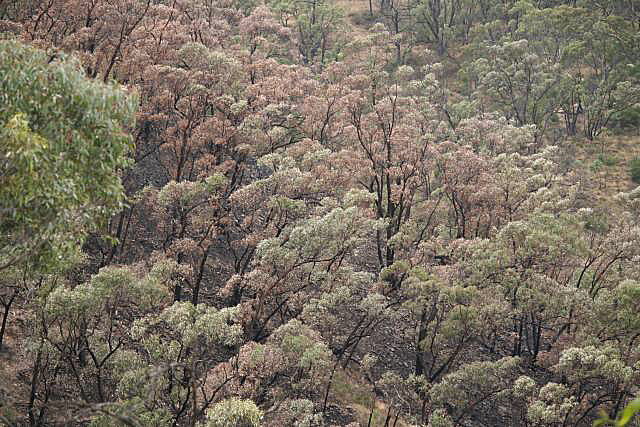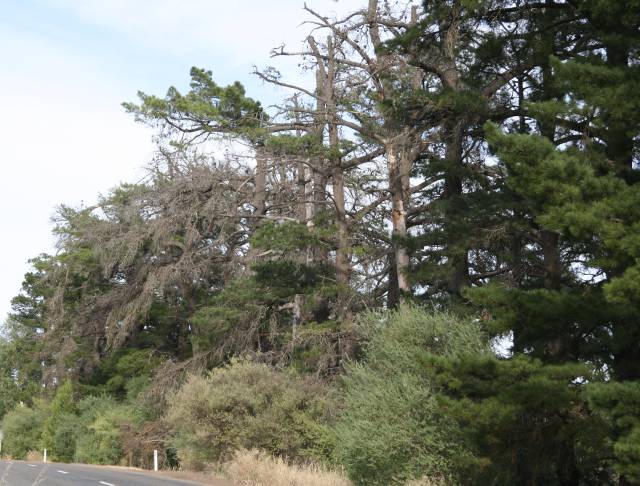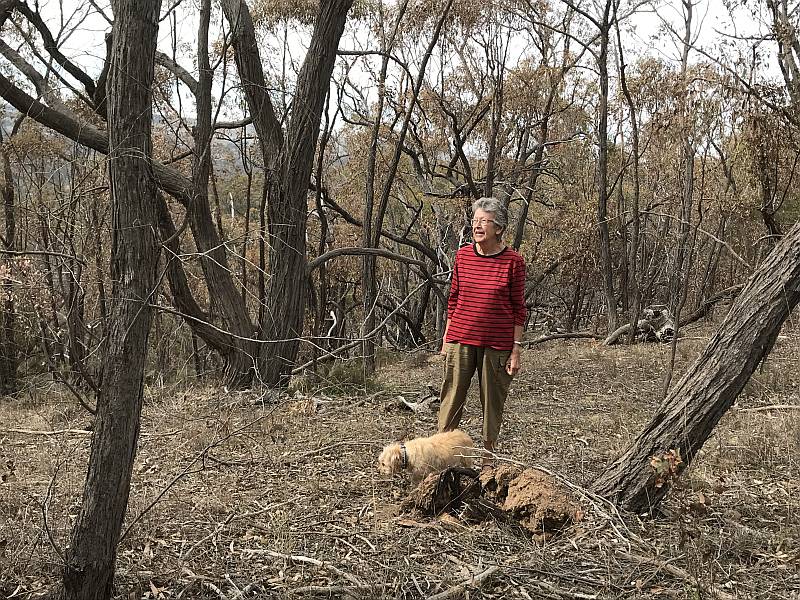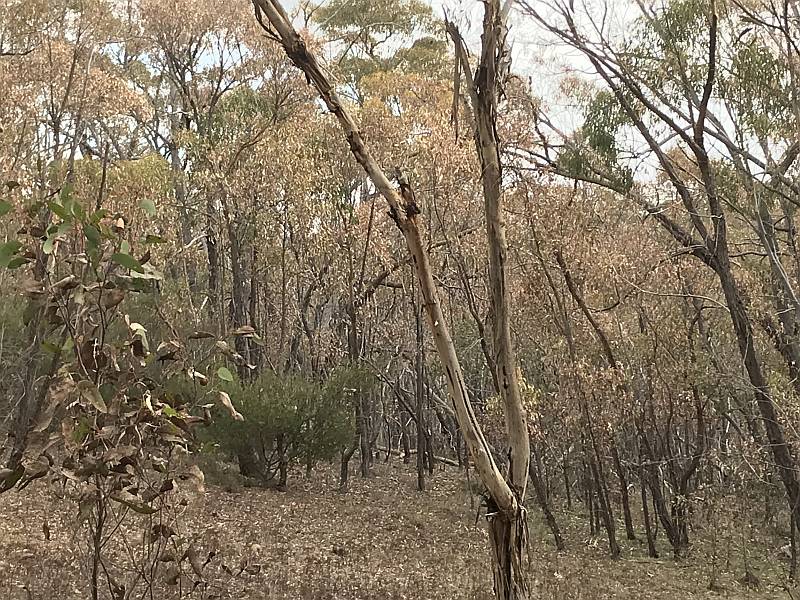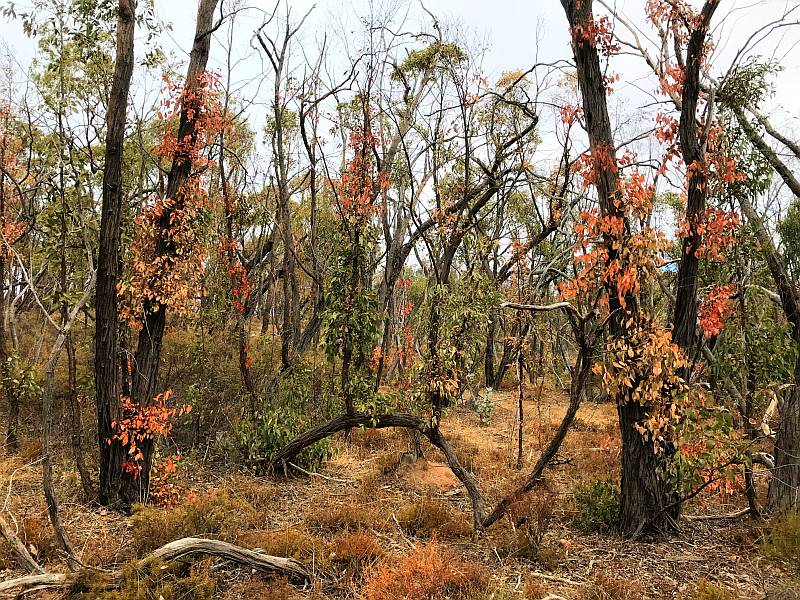|
Introduction
Spring Gully was first gazetted as a Wildlife Reserve in 1962 and later proclaimed as a Conservation Park to protect a significant population of red stringybark trees. It is at Latitude -33.91°, Longitude 138.59°, near Clare in the state of South Australia. The stringybarks (Eucalyptus macrorhyncha) had, thousands of years previously, become separated from the remainder of the species which are in eastern Victoria and eastern NSW, see Wikipedia. Many of these trees have suffered badly from heat and drought, particularly in the summer of 2007/08, and an unknown proportion have died.Environmentalist have been predicting for years that as temperatures rise due to climate change, species on hills or mountains would tend to die-out at lower altitudes and gradually spread toward higher altitudes, where the lower temperatures would suit their needs.
It seems that the red stringybarks of Spring Gully Conservation Park have taken a big first step on the journey toward that local extinction. It is more a guess than an estimate, but something like a third to a half of the trees have come very close to dying, or have died. As these trees are at or near the top of the Clare hills, the species cannot migrate to a cooler habitat at a higher altitude.
|
The Spring and early Summer of 2007 were dry in the Clare Valley of South Australia, a premium and famous wine-growing region. To make matters worse the first three months of 2008 were exceptionally dry; only about 16mm of rain fell in this period. The final blow was an all-time record long heatwave in mid-March. (Between 3 March and 17 March 2008 Adelaide recorded 15 consecutive days of 35°C or above, and 13 consecutive days of 37.8°C (100.0 °F) or above - both records for an Australian capital city.) The results can be seen in the photos below...
